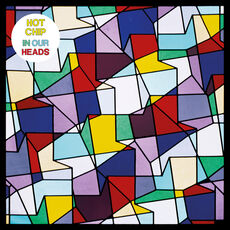Each week at Qobuz we are met with a cornucopia of new releases in CD-quality and 24-bit Hi-Res, making the decision of what to listen to a rather difficult one.
Just scan a cursory glance over our new releases and you'll notice that most of them are available in CD quality 16-bit/44.1kHz, with an increasing number of new recordings available in the Hi-Res format - often, it's mostly re-editions of classic oldies recorded on vinyl which are digitally remastered in 96kHz or higher (up to 192kHz).
It shouldn't come as much of a surprise that the sixth LP from British band Hot Chip is available in 24-bit/44.1kHz. Musically, their dance-pop recalls other early contemporaries like the Scissor Sisters and The Gossip as well as the more robust electro of Giorgio Moroder. Despite always wearing their influences on their sleeve, Hot Chip's arrangements and quirks still have the power to surprise even the most devoted fan.
After receiving its endorsement from our quality control, we grabbed our Denon 7100 headphones and loaded onto our Sony NWZ-ZX2 player Why Make Sense? in WAV 24-bit/44.1kHz. We've listened to it repeatedly since its release last week so we could properly get to know its ins and outs.
Opener Huarache Lights is not the most satisfying listen; it's a little messy and desn't quite reach that point of ecstasy, leaving the listener hungry. Luckily it's followed by Love Is The Future, with twin-track vocals (which are really present, creating a lovely sound scene) and technical mastery which gives an analogue feel to the whole thing and a refined, precise texture.
We continued on to the chart-friendly Cry For You, combining Moroder-style synths and clever mixing. But here the audio quality, whilst good, doesn't blow you away. The introverted nature of some of these tracks is not overly compatible with louder volumes or whimsical mixing.

Things are dialled back on White Wine and Fried Chicken, where the voice is brought to the fore and is enhanced with a vocoder. The result is technically interesting, but not as much as on the funky Easy to Get with its chirpy '80s synths, good use of stereo, effective spacing in the voices and a serious bassline.
All artistic merit to one side, the 24-bit/44.1kHz version of Why Make Sense? reveqled a certain technical linearity (dynamically correct without any excess) and a good quality of sound, but no surprises. It remains, however, a very good listen.
To keep up with the latest news, join us on Facebook or follow us on Twitter.
If you are a manufacturer, importer, distributor or actor in the domain of sound reproduction and you wish to contact us, please do so using the following address: newstech@qobuz.com
If you are passionate about our Hi-Fi Guide and you wish to contact us, please do so using the following address: rubriquehifi@qobuz.com
Original article by PIERRE-PATRICK GARCIA
Translation by RACHEL HARPOLE

